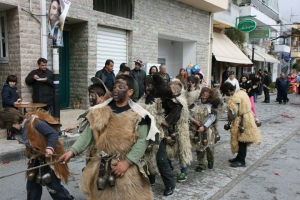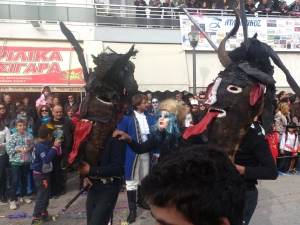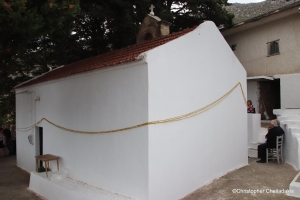On the occasion of the feast of Saints of the Orthodox Christian calendar, many local feasts are organized in villages and towns of Crete, especially in August.
The feasts, along with religious and worship importance, contribute to the preservation of customs and traditions and to the social interaction of among the local communities. After the festivities in the temples, locals gather at the central squares of the villages and celebrate with music and dance till the early morning hours.
One of the most important religious traditions in Crete is the celebration of Christmas Mass in a real manger in the cave Marathokefala. Also during the festival of Saint John the Theologian at Marmaketo, on Lassithi plateau, the dried orchids of the epitaph bloom again. In Agios Thomas and on the Asterousia range ancient habits revive; temples and houses are surrounded with waxed ropes, to keep evil spirits away.
Ancient customs for curing patients are still alive. In Sfakia patients devote dough dolls to Saint Anthony to cure their illnesses and in Psiloritis they devote human shaped breads, lazaropsoma, during memorial services. During the celebration of Agia Pelagia, patients bury their aching legs or hands in the sand of the beach of Agia Pelagia. In Achlade clothes are put on the sacred turpentine tree of Saint Fanourios.
Apart from the common Easter customs in Greece, Crete has some special local traditions to show. These include the auction of the Cross, the blessing of sheep sheep under the epitaph, the burning of Judah, the transferring of the Holy Light at home while keeping silent and leaving red eggs on graves.
There are more customs, such as Klidonas, celebrated on the day of Saint John the Baptist in late June. During the feast of the Transfiguration of Christ, pilgrims devote the first grapes of the season to bless their vineyards, while on the same day at the top of the peak Afendis of range Dikti, participants try to find coins in the soil around the church. On 3rd November, on the celebration day of Saint George “Methystis” (methystis, one who makes you drunk) barrels with wine are first opened.















































































